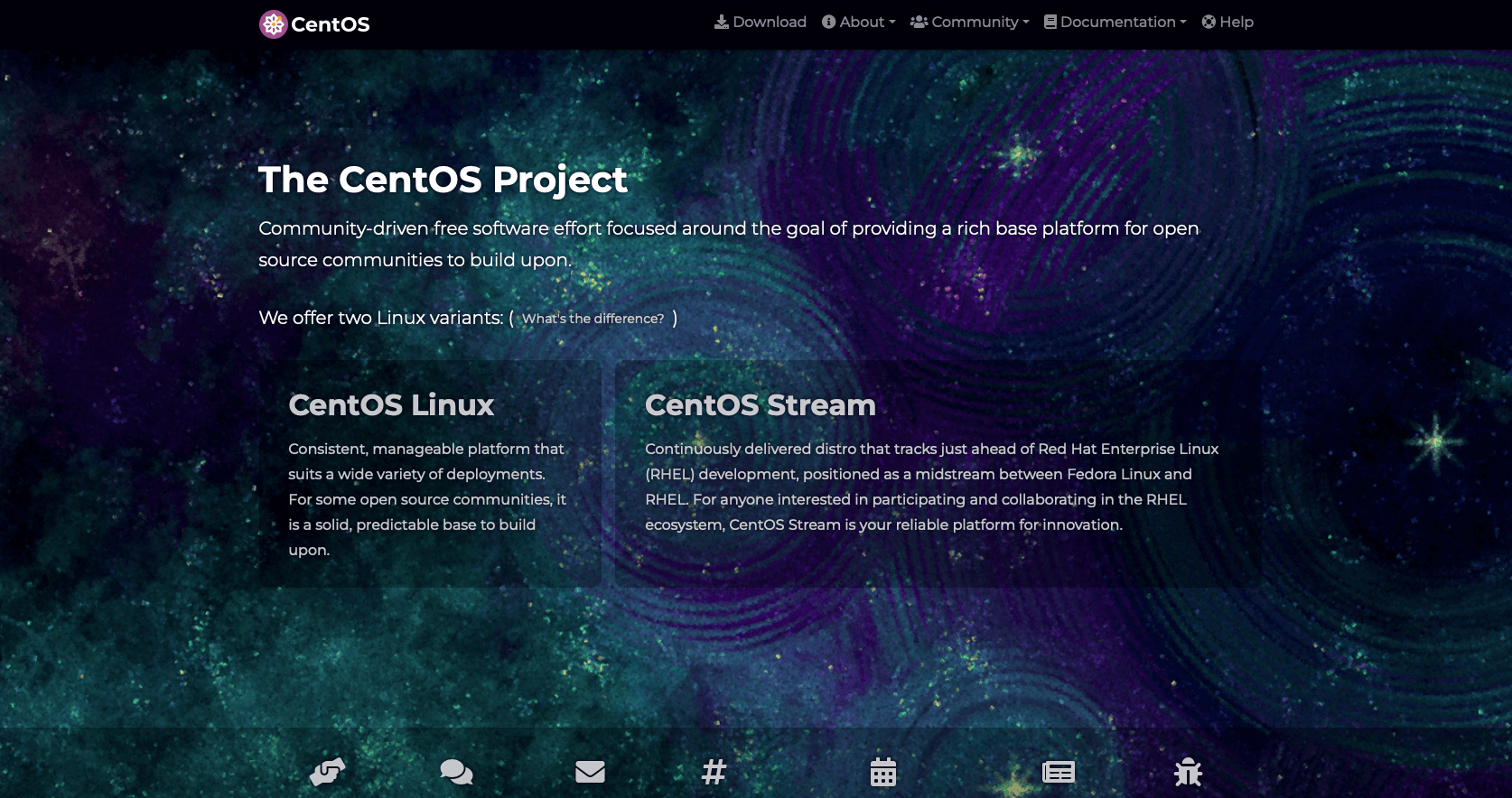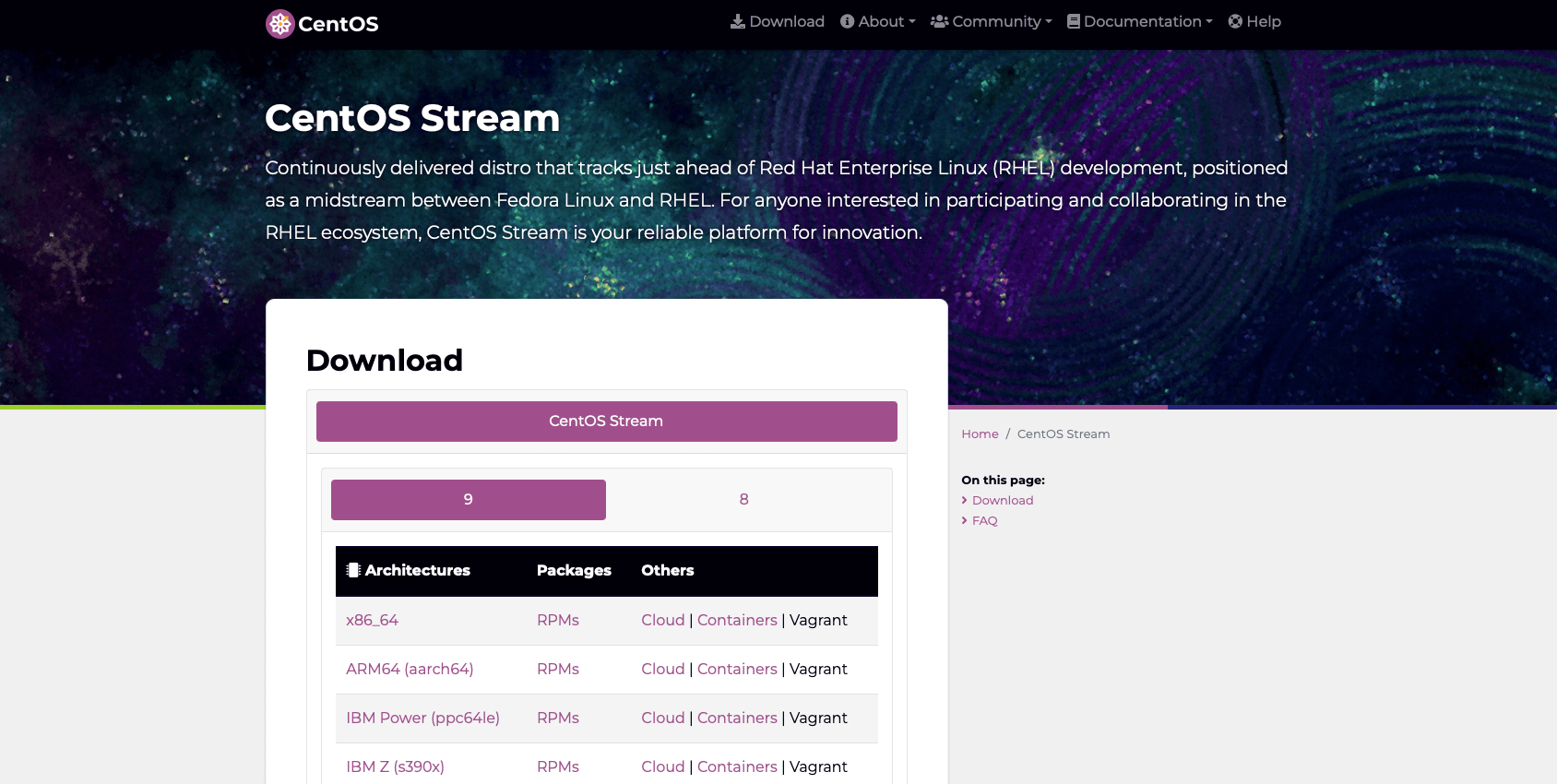Complete Guide: AlmaLinux Is the Perfect Alternative for CentOS Server Operating System

Let’s start with the basics: AlmaLinux is a free and open-source Linux distribution (i.e., a Linux-based operating system) designed to replace CentOS, aiming to provide the same reliability, stability, security, and functionality.
That out of the way, unlike CentOS, AlmaLinux has the added benefit of commercial support, making this Linux distribution an attractive option for businesses and organizations looking for a stable and secure operating system and server environment. It was initially released in March 2021.
The entity behind AlmaLinux is the AlmaLinux OS Foundation, a nonprofit created to benefit the AlmaLinux OS community.
9 Reasons Why AlmaLinux is a Top-Notch OS
This article will explore nine reasons that make AlmaLinux a great, if not the perfect, alternative for a CentOS server and what sets it apart from other Linux distributions.
Let’s dive in!
1. Stable and Reliable
If something’s certain, AlmaLinux has been designed and developed to be as stable and reliable as possible. Based on Red Hat Enterprise Linux (RHEL), which is widely used in commercial environments and spaces and is known for being a highly stable and secure Linux distribution with great support, AlmaLinux includes security features like firewalls, intrusion detection, and malware protection to help keep servers safe from intruders. It released an "AlmaLinux CentOS as stable RHEL for DevOps that keeps using it.
Like Samsung Electronics, fortune 500 companies have used RHEL for app development.
2. Commercial Linux Distribution

Unlike CentOS, which is exclusively community-driven, AlmaLinux OS is commercially and community supported and a solid enterprise operating system.
If you encounter any issues with your server, you can receive premium (i.e., paid) support from AlmaLinux reps. This is a valuable resource for businesses and independent contractors looking to keep their servers running smoothly at all times. Plus, it is excellent for people who don’t have the time to tinker around with their OS until they find the solution.
3. Easy Migration

Thanks to the latter's easy migration path, CentOS users can easily migrate to AlmaLinux. This is because the two OSs share many components. For example, they have similar architecture and design based on the RHEL codebase. They also share a similar ecosystem, meaning users familiar with the CentOS Linux environment will have an easy time with AlmaLinux.
AlmaLinux is also binary compatible with CentOS, meaning the software packages built for CentOS will also run on AlmaLinux. In other words, installing CentOS software on AlmaLinux is native.
Last but not least, AlmaLinux provides handy tools and scripts to assist CentOS users in migrating. These tools automate most manual tasks, making the migration fast and smooth.
4. Wide Compatibility
One thing that’s super cool with AlmaLinux is its compatibility with a wide range of hardware and software. This makes it an ideal choice for businesses that need to run different types of applications, software, and services on their servers.
For example, AlmaLinux supports cloud environments compatible with popular cloud platforms, like Amazon Web Services (AWS), Microsoft Azure, and Google Cloud Platform (GCP). On top of this, AlmaLinux is compatible with a vast range of hardware platforms, including x86, x86-64, ARM, and PowerPC, making it a perfect OS to run on dedicated server hardware.
Further, developers looking to deploy their applications in containerized environments can safely choose AlmaLinux because it supports containers and container orchestration platforms like Kubernetes and Docker. AlmaLinux supports virtualization, making it an ideal choice for deploying servers in virtual environments. It is compatible with KVM, VMware, and Hyper-V.
5. Optimized for Performance
The AlmaLinux OS includes various optimizations and enhancements designed to improve the performance of your server. For example, it has:
-
Improved memory management
-
Support for newer devices and hardware
-
Improved input/output (I/O) performance
On top of this, AlmaLinux uses a streamlined build process that essentially “eliminates” unnecessary packages, ensuring a lean and efficient system. AlmaLinux also receives regular software updates and bug fixes for optimal performance and stability.
The current AlmaLinux version is 9.1 (released November 2022) and has many visual enhancements.
6. Open-Source
Like CentOS, AlmaLinux is open-source (i.e., built on open-source software), allowing users to access and modify the source code. As expected, AlmaLinux offers a level of customization that users may not find in other commercial Linux-based operating systems.
Let’s stress this: AlmaLinux is open-source, enabling developers worldwide to contribute to the project, work together to make new software, fix vulnerabilities, and improve the overall security of the OS. In addition, open-source software usually means free software, making AlmaLinux accessible to everyone, regardless of their financial situation. This way, businesses, and individuals can save on licensing fees, which is fantastic.
7. Active User Community
Considering its open-source nature, it shouldn’t surprise that AlmaLinux has a large and active user community that provides support and advice to users. The community can be a valuable resource for businesses and organizations needing help with operating systems or servers.
The AlmaLinux community is a group of developers, users, and Linux enthusiasts passionate about AlmaLinux. They work together to support each other and to advance the project by contributing code. As discussed above, the community is open to anyone who wants to participate, and anyone can contribute to the project by reporting bugs or submitting security patches.
The primary strength of the community is its commitment to open-source principles and willingness to collaborate closely with other open-source communities. This means that AlmaLinux benefits from the contribution of talented developers who work together to make the OS as robust and secure as possible.
8. Scalable

AlmaLinux is designed to be scalable, making it an excellent choice for businesses and organizations that need to run large and complex applications. The operating system can be easily configured to accommodate different hardware configurations, like adding additional memory (i.e., RAM), disk space, and processing power (i.e., a high-end CPU) to handle growing demands. Add to this the fact that AlmaLinux is built on top of the robust architecture of RHEL, and you have an OS ready to tackle any challenge.
9. User-Friendly Interface
Like most Linux environments, AlmaLinux has a user-friendly interface, making it easy for businesses and organizations to manage their servers or even transition from Windows. With a simple and highly intuitive interface, users can efficiently perform tasks like installing new software, configuring security settings, and managing user accounts.
Remember that AlmaLinux doesn’t have a graphical user interface, as it is primarily designed for server use. Users, though, can install one, like GNOME or KDE, if desired.
So, the default installation of AlmaLinux does not include a graphical user interface, which could be considered a positive since that makes AlmaLinux a lightweight server option. This also allows administrators to configure and tailor the system according to their needs.
The AlmaLinux OS can be a perfect alternative for a CentOS server. It is designed to be stable and reliable, is commercially supported, offers an easy migration path from CentOS, is compatible with a wide range of software and hardware, and is optimized for performance.
AlmaLinux is also highly scalable and has a user-friendly interface, making it an excellent platform for businesses to host their server. So, if you’re looking for a Linux-based operating system for your server, AlmaLinux is a perfect choice. Thanks to its stability, security, constant updates, reliability, and commercial support, it provides enterprises and organizations with dependable and secure server environments.
If you were one of the die-hard CentOs users, don't fret because your favorite OS was discontinued. Just try this new OS. Try AlmaLinux!
Get Answers to Your Burning Questions
If you have burning questions about the stability and reliability of AlmaLinux, CentOS, and RHEL, you're not alone. Many users want to know which operating system is the most stable and secure for their servers.
By researching the differences and similarities between these operating systems, you can get a better understanding of which one might be best suited for your needs. AlmaLinux is a newer operating system that was created as a stable and free alternative to CentOS, which was recently discontinued.
CentOS, on the other hand, was a popular choice for its stability and long-term support. RHEL, or Red Hat Enterprise Linux, is a widely used and respected operating system in the enterprise market. By learning about the unique features of each of these operating systems, you can make an informed decision about which one to choose for your server needs.
What Kernel Is AlmaLinux 9?
Alma Linux 9 is a community-driven open-source OS. It is based on Red Hat Enterprise Linux (RHEL), and its primary goal is to provide a stable and reliable platform for enterprises and data centers.
The kernel used in AlmaLinux 9 is the… Linux kernel. A kernel is the low-level core of an operating system and is responsible for managing the system’s resources, like processors, memory, and I/O operations. It acts as an intermediary between software and hardware.
The Kernel version in AlmaLinux 9 is 5.10, released in December 2020, and is considered a Long-Term Support (LTS) version. This version offers new features, additional hardware support, bug fixes, and security updates. In other words, using an LTS version ensures stability over a long time, making AlmaLinux 9 ideal for enterprise environments.
Is AlmaLinux Same with CentOS?

Let’s clarify: AlmaLinux and CentOS are related but different.
That said, both operating systems are community-driven, commercially accessible, and based on the source code of RHEL. Though CentOS has been designed to provide an open-source alternative to RHEL – or, at least, was created before it was discontinued.
On the other hand, AlmaLinux is a newly developed OS that is commercially supported. This means that it offers paid support options for users who need it. Here’s the exciting bit: AlmaLinux was created as a response to the discontinuation of CentOS and aimed to become an enterprise-grade server OS.
Regarding features, AlmaLinux and CentOS are similar and share many, if not all, components, including the Linux kernel and user interface.
However, some key differences exist: For example, AlmaLinux uses the RPM packaging system, while CentOS uses YUM. Also, AlmaLinux has a faster release cycle than CentOS, receiving updates and new features more frequently.
Is Rocky Linux a Better Linux Distribution Than AlmaLinux?
Determining whether Rocky Linux is better than AlmaLinux is challenging and depends on the specific needs and requirements of the user. In every case, AlmaLinux and Rocky Linux are Linux-based operating systems aiming to provide stable platforms for businesses.
Rocky Linux is a new operating system created as a community-driven alternative to CentOS. It is free and designed to be fully compatible with CentOS and RHEL, helping users transition from those operating systems to Rocky Linux easily.
Unlike Rocky Linux and CentOS, AlmaLinux is commercially supported, offering paid support options for users needing assistance. In terms of features, both Rocky Linux and AlmaLinux share many components, like the Linux kernel, and have similar user interfaces.
Is AlmaLinux the New CentOS?
In a way, it is. AlmaLinux can be seen as the new CentOS because it was created as a response to the discontinuation of CentOS by the AlmaLinux OS Foundation.
Like CentOS, AlmaLinux is based on Red Hat Enterprise Linux (RHEL) and aims to provide a reliable platform for enterprise use.
CentOS was a popular community-driven operating system based on RHEL and was widely used by small-and-large businesses and individuals for home use. However, its discontinuation at the end of 2021 led to the creation of AlmaLinux as a new alternative.
On that note, Oracle Linux and Rocky Linux are also binary compatible with RHEL, making them suitable CentOS replacements. Both can serve as RHEL clone and enterprise-grade operating systems.
What Is the Difference Between CentOs and RHEL?
CentOS and RHEL are some of the most popular Linux-based operating systems.

However, they do have some key differences:
RHEL is a commercially supported OS developed by Red Hat, a well-known provider of enterprise open-source software solutions.
On the other hand, CentOS is a community-driven operating system based on RHEL and one of the most popular RHEL forks. It is also designed to provide a reliable enterprise platform and is free to use. The cool thing about CentOS is that it is intended to be fully compatible with RHEL, making it easy for users to transition/migrate from RHEL to CentOS.
Regarding features, both CentOS and RHEL share many components, including the Linux kernel, and have similar user interfaces. That said, RHEL has more features and optimizations. On top of that, RHEL offers paid support for users who need assistance, while CentOS, apart from being discontinued, is only community-driven and doesn’t offer paid support options.
Frequently Asked Questions
Is AlmaLinux a Red Hat Enterprise Linux?
AlmaLinux is not RedHat but is based on RHEL. Red Hat is a leading provider of enterprise open-source software solutions and one of the most significant contributors to the Linux community. They are known for their flagship product, RHEL, a popular OS ideal for cloud computing and enterprise environments.
On the other hand, AlmaLinux was created as a response to the discontinuation of CentOS as a community-driven OS, aiming to provide a reliable platform for small and large-scale businesses.
What Is the Difference Between CentOS Stream and CentOS?
The CentOS project manages two Linux distributions: CentOS Linux and CentOS Stream. The main difference is that CentOS' own commercial Linux distribution is based on RHEL, while CentOS Stream is the precursor version, including upcoming Red Hat updates.
CentOS Stream targets developers and early adopters who don't have the time or don't want to experiment with and provide input on the latest updates. In contrast, CentOS, as has been mentioned many times, focuses on providing a stable and reliable OS platform.









.png)



